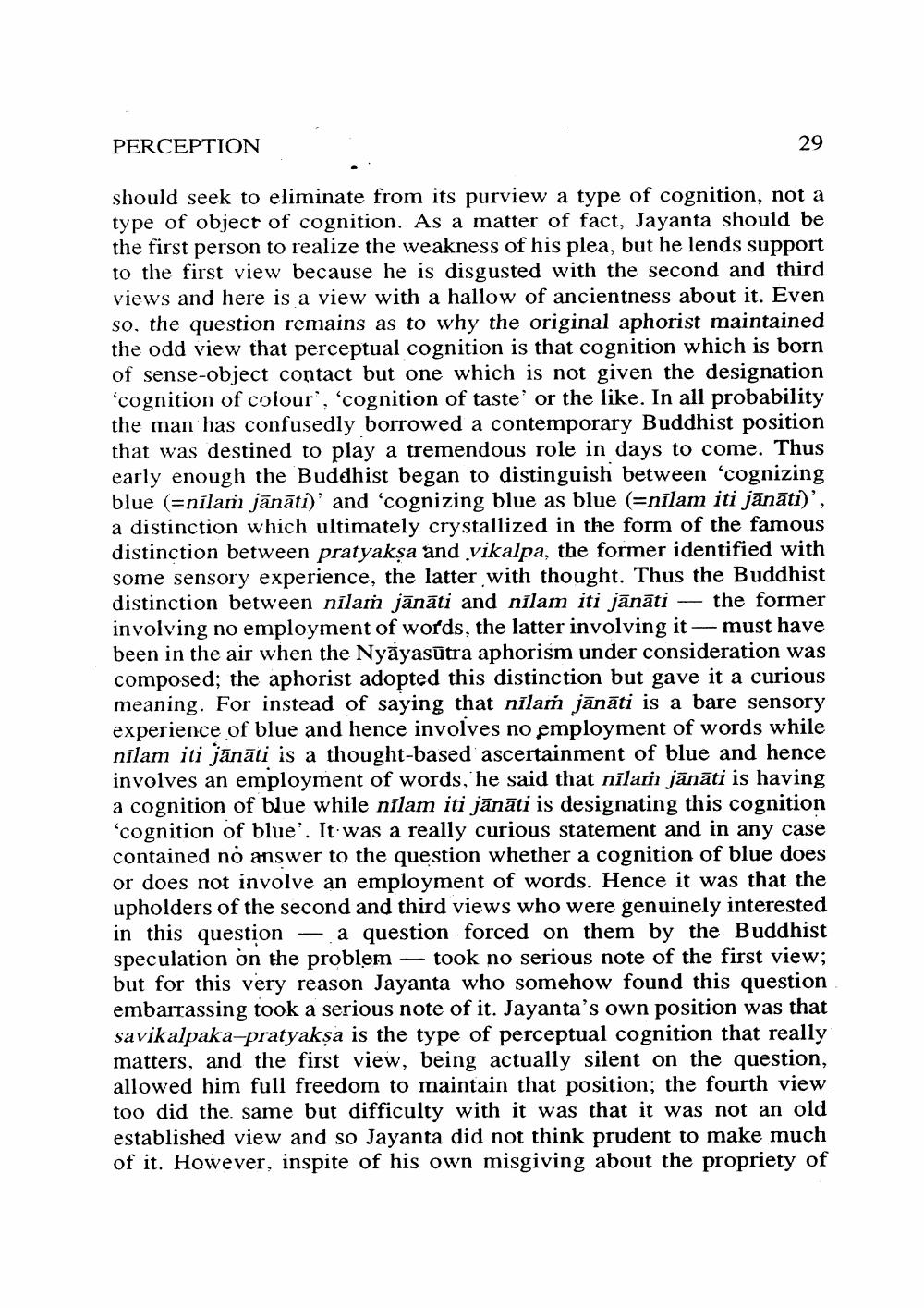________________
PERCEPTION
29
should seek to eliminate from its purview a type of cognition, not a type of object of cognition. As a matter of fact, Jayanta should be the first person to realize the weakness of his plea, but he lends support to the first view because he is disgusted with the second and third views and here is a view with a hallow of ancientness about it. Even so, the question remains as to why the original aphorist maintained the odd view that perceptual cognition is that cognition which is born of sense-object contact but one which is not given the designation 'cognition of colour', 'cognition of taste' or the like. In all probability the man has confusedly borrowed a contemporary Buddhist position that was destined to play a tremendous role in days to come. Thus early enough the Buddhist began to distinguish between 'cognizing blue (=nilam jānāti)' and 'cognizing blue as blue (=nilam iti jānāti)', a distinction which ultimately crystallized in the form of the famous distinction between pratyakşa and vikalpa, the former identified with some sensory experience, the latter with thought. Thus the Buddhist distinction between nīlam jānāti and nīlam iti jānāti — the former involving no employment of words, the latter involving it - must have been in the air when the Nyāyasūtra aphorism under consideration was composed; the aphorist adopted this distinction but gave it a curious meaning. For instead of saying that nilaṁ jānāti is a bare sensory experience of blue and hence involves no employment of words while nilam iti jānāti is a thought-based ascertainment of blue and hence involves an employment of words, he said that nīlam jānāti is having a cognition of blue while nilam iti jānāti is designating this cognition 'cognition of blue'. It was a really curious statement and in any case contained no answer to the question whether a cognition of blue does or does not involve an employment of words. Hence it was that the upholders of the second and third views who were genuinely interested in this question — a question forced on them by the Buddhist speculation on the problem — took no serious note of the first view; but for this very reason Jayanta who somehow found this question embarrassing took a serious note of it. Jayanta's own position was that savikalpaka-pratyakṣa is the type of perceptual cognition that really matters, and the first view, being actually silent on the question, allowed him full freedom to maintain that position; the fourth view too did the same but difficulty with it was that it was not an old established view and so Jayanta did not think prudent to make much of it. However, inspite of his own misgiving about the propriety of




